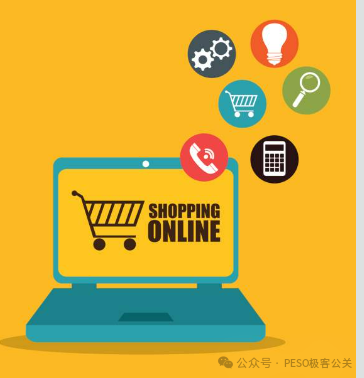Four Days Instead of One – What Does It Tell Us?

Amazon Prime Day, once a one-day frenzy, is now four days long. This is not just about selling more. It reflects insights into today’s market, consumer psychology, and future marketing trends.
Prime Day’s Extension – A Reflection of E-Commerce’s New Normal

The easy-growth era of e-commerce is over. Explosive sales are harder to replicate. Even Amazon no longer relies on one-day miracles.
Meanwhile, Western consumer spending power is declining. Buyers are cautious, compare more, and take longer to decide. Extending Prime Day gives them time and repeated ad exposure to finally convert.
Amazon’s Long Game – From Flash Sales to Sustained Engagement

In my opinion, Amazon's extension of Prime Day to four days is an attempt to adopt a more "meticulous" operation model, as well as an upgraded strategy for "sustained user engagement". A one-day Prime Day is more like a quick "blitzkrieg", where both consumers and brands experience a concentrated burst of activity in a short period, followed by a rapid cool-down. In contrast, a four-day Prime Day turns the entire process into a "protracted battle":
Repeated influence through subtle infiltration
Over these four days, Amazon can more leisurely push various preferential information to users. You might just browse casually on the first day, be attracted by an advertisement on the second day, feel tempted on the third day, and finally can't help but place an order on the fourth day. This continuous advertising stimulation and information engagement will undoubtedly greatly increase the conversion rate of potential users.
Smoothing out peaks to enhance experience
Imagine if everyone rushes to place orders on a single day, would the servers crash? Would the logistics be paralyzed? Spreading the event over four days can effectively alleviate these pressures, allowing consumers to have a smoother shopping experience and enabling the entire supply chain to operate more smoothly.
Cultivating habits and strengthening stickiness
Extending the event duration means that members have more opportunities to participate and enjoy exclusive benefits. This not only promotes current consumption but also subtly cultivates members' shopping habits and enhances their loyalty to the Amazon platform.
In the final analysis, Amazon is no longer merely pursuing short-term "sales surges"; it values more long-term user stickiness and sustainable growth.
Seller Insights: Marketing Should Also Go Long-Term

Amazon's move offers an important insight to us brand sellers: If even the platform is adjusting its strategy to extend the promotional timeline, shouldn't we also take a longer-term view in our marketing efforts?
- Move away from "one-off surges" and pursue "steady, sustained growth": Stop relying on a single big promotion to solve all problems. From new product crowdfunding to daily promotion, we should consider how to make more long-term plans. Establish deeper connections and trust with consumers through continuous content output and community interaction, rather than just pursuing short-term exposure and conversion.
- Multi-point engagement to boost decision-making: Consumers are more cautious when buying things now, so we should provide sufficient information and "reasons" in the marketing process. Product reviews, user cases, brand stories… Show the value of products from multiple dimensions to help consumers dispel their concerns and finally make purchase decisions.
- Deeply cultivate private domains to retain users: Amazon Prime Day's emphasis on members also reminds us again that the value of private domain traffic should not be underestimated. Spend energy building your own user community, and turn one-time consumers into loyal fans through exclusive benefits and personalized services. This is the cornerstone of the long-term development of the brand.
- Break away from "involution" and seek differentiation: When everyone is focusing on short-term big promotions like "Amazon Prime Day", "Black Friday" and "Cyber Monday", homogeneous competition will become more and more serious. It's time to jump out the box and try more innovative and differentiated marketing methods. Maybe a clever online activity or a heartfelt collection of user stories can impress consumers more than simple price reductions and promotions.
The "lengthening" of Amazon Prime Day is not just a change in dates, but a profound response to the current e-commerce environment. It tells us that the era when short-term outbreaks could create miracles may really be over. In the future, brand marketing needs to pay more attention to long-term planning, user experience and refined operation.
So, what do you think are some other innovative ways for brand sellers to cope with the trend of longer consumer decision-making cycles?
Whoever Owns Private Traffic Will Win

To think more deeply, the extension of Amazon Prime Day also sounds the alarm again: Brand sellers, it's time to pay more attention to your own independent websites! For a long time, we have been used to relying on platforms. The platform's traffic, rules, and promotional nodes seem to determine everything. But when the platform itself is seeking changes and even shows a lack of confidence in the "short-term sales myths", as brand owners, can we still put all our eggs in one basket?
An independent website is the key for us to take control of our own destiny. It means you have your own traffic entrance, can independently decide on promotional strategies, and accumulate first-hand user data. You are no longer just a "store" on the platform, but a "home" with your own brand story and user community. Here, you can:
- Control user data more freely: Understand user behaviors, analyze purchasing preferences, and provide a basis for more precise marketing.
- Build a unique brand image: Free from platform template restrictions, create a more personalized and immersive brand experience.
- Flexibly formulate marketing strategies: No longer need to "look at the platform's face", independently plan activities and grasp pricing power.
- Establish real user relationships: Build a membership system and operate communities through the independent website to convert one-time buyers into loyal fans. In today's uncertain market environment, finding certainty is the real way to break through the situation. Whoever can master their own private domain traffic and truly retain users in their own independent system will have more opportunities to "turn the tide against the wind".
Amazon's transformation is precisely a reminder for us not to pin the future of our brands entirely on any external platform. Only by truly having our own position can we remain invincible in the ever-changing market.
Finally, I wish everyone all the best on Prime Day and a great sale for the whole team!!! Welcome to interact and communicate in the comment section.



